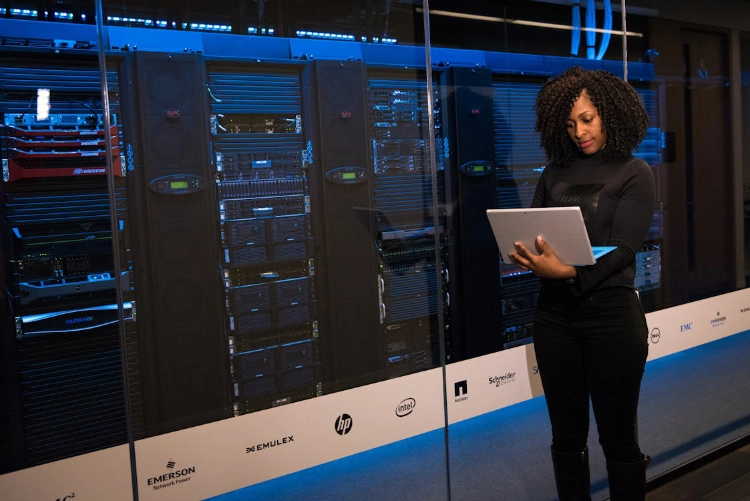When people think about developing an app, they often focus on the sleek designs, the smooth animations, and the user-friendly interface. But there's a crucial element working behind the scenes that doesn't always get the attention it deserves: the backend.
While the frontend is what users interact with, the backend is the unseen engine that keeps everything running smoothly. In this article, we'll break down why the backend is just as important (if not more!) and how it can either power your app to success or cause it to fail.
Let's dive into why the backend matters, what can go wrong without a strong one, and how to make sure your app is built on a solid foundation.

What is Backend Development?
At its core, backend development refers to everything that happens behind the scenes in an app. It's the engine room that makes the frontend (the part your users see and interact with) functional.
Imagine you're using an app to book a flight: the beautiful design that shows you flight options is the frontend, but everything that processes your payment, verifies seat availability, and handles your booking confirmation happens in the backend.
The key components of backend development include:
- Servers: The machines that handle requests and store data.
- Databases: Where all the app's data is stored (think user information, product data, or transaction details).
- APIs: The pipelines that let different systems communicate with each other.
- Business Logic: The rules and decisions that drive how the app functions.
In short, the backend is what makes your app “work.” Without it, you've just got a pretty interface that doesn't do anything useful.
The Role of the Backend in App Functionality
So, why exactly is the backend so critical? Let's break it down into the main functions a good backend performs:
Data Management
Every app interacts with data in some way, whether it's storing user profiles, tracking inventory, or logging activity. The backend handles all of this data processing, ensuring it's stored securely and retrieved quickly when needed.
Imagine running an eCommerce app without proper backend data management. When a customer wants to check out, the backend must handle stock availability, update quantities in real-time, and ensure the data is accurate. If the backend isn't up to scratch, you could be selling products that are out of stock—causing customer frustration and loss of trust.
Security and Authentication
In today's world, data security is non-negotiable. Your backend plays a huge role in securing user information, such as passwords, credit card details, and personal data. Without proper encryption, firewalls, and secure authentication methods, your app is vulnerable to attacks and breaches.
Even a minor data breach can destroy a brand's reputation. Your backend needs to handle everything from user authentication (making sure people logging in are who they say they are) to encrypting sensitive data to prevent it from being accessed by hackers.
Business Logic
The business logic in your app determines how it responds to user actions. It's the brain behind decisions like, “What happens when someone clicks the 'Buy Now' button?” or “How should we calculate shipping for international orders?” The backend handles all of these calculations and decisions.
Integrations with External Services
Most apps don't exist in a vacuum. They need to communicate with third-party services—whether that's a payment gateway like Stripe, a mapping service like Google Maps, or a CRM tool for customer management. The backend ensures that these external integrations happen seamlessly and securely.
For example, if your app needs to process payments, the backend communicates with payment gateways to process transactions and confirm that payments have been successful. Without a strong backend, these interactions can fail, leading to customer frustration and lost revenue.
The Impact of a Poor Backend on App Performance
Now that we understand what the backend does, let's talk about the consequences of neglecting it. Here's how a weak backend can sabotage your app:
Slow Response Times
One of the first signs of a weak backend is a slow app. If your backend isn't properly optimized, it can take too long to process requests, which leads to long loading times and frustrated users. Research shows that users will abandon an app if it takes more than a few seconds to load.
A sluggish backend can mean the difference between a successful app and one that users quickly uninstall.
App Downtime
An unreliable backend can lead to app crashes or downtime, which can be disastrous for businesses. Think about it: if your app is down, your users can't access your services, and that means lost revenue and a damaged reputation. Whether you're running a restaurant app, a fitness tracker, or an online marketplace, downtime is a dealbreaker.
Data Breaches and Vulnerabilities
A poorly designed backend is also more vulnerable to security breaches. Hackers love exploiting weak backends because they know that sensitive user data, like credit card information or personal details, can be accessed. Not only can this cause legal problems (especially with data protection regulations like GDPR), but it can also lead to a loss of user trust that's hard to recover from.
Scalability Issues
Finally, a backend that isn't built for scalability can severely limit your app's growth. As your user base grows, so does the demand on your backend. If it's not designed to handle increasing traffic, you'll run into performance bottlenecks. Think about trying to serve 100,000 users with the infrastructure meant for 1,000—it's a recipe for disaster.
Key Components of a Strong Backend
So, what makes a backend “strong”? Here are the essential components:
Robust Databases
Choosing the right database is critical. For example, SQL databases are great for structured data and complex queries, while NoSQL databases like MongoDB are better suited for unstructured data and scalability. You need to ensure that the database structure aligns with your app's needs, and it must be fast, secure, and capable of handling large amounts of data as your app grows.
Scalable Servers
Using cloud-based infrastructure (e.g., AWS, Google Cloud) allows your app to scale quickly as demand increases. A scalable server setup ensures that even during high-traffic times (like Black Friday for an eCommerce app), your app continues running smoothly.
APIs and Microservices
Well-designed APIs (Application Programming Interfaces) are critical for smooth communication between the frontend and backend. Additionally, many modern apps use a microservices architecture. Instead of having one massive codebase handling everything, microservices break the backend into smaller, independently functioning pieces. This offers greater flexibility and can make it easier to scale individual components.
Caching and Load Balancing
Caching stores frequently requested data closer to users, reducing load times. Meanwhile, load balancing distributes user traffic across multiple servers, preventing any single server from getting overwhelmed. Both are critical for optimizing speed and reliability, especially for high-traffic apps.
Backend Security: Protecting Your App and Users
A strong backend is synonymous with security. Here are some key security practices your backend should follow:
- Data Encryption: Encrypt sensitive data both at rest and in transit.
- Authentication and Authorization: Implement multi-factor authentication (MFA) and robust authorization protocols like OAuth to protect user accounts.
- Regular Security Audits: Regularly assess and patch vulnerabilities in your backend.
- Compliance: Ensure that your app follows relevant data protection laws such as GDPR, HIPAA, or CCPA, depending on your industry.
Backend and Scalability: Planning for Future Growth
Scalability is key to future-proofing your app. Two main strategies include:
- Horizontal: Adding more servers to handle increasing traffic.
- Vertical Scaling: Increasing the power of a single server (CPU, memory).
A solid backend should also use cloud-based technologies that automatically scale to meet user demand, ensuring your app performs just as well during traffic spikes as it does during normal times.
Why You Need a Reliable Development Partner
Building a strong backend requires expertise. If you're looking to develop an app or improve an existing one, partnering with an experienced development company is essential. Here's why:
- Expertise in Scalable Architecture: A good development firm will know how to design your app's backend for performance and future growth.
- Tailored Solutions: A reliable partner will provide custom backend solutions that align with your business goals, whether that's supporting millions of users or handling complex integrations.
- Post-launch Support: Ongoing maintenance is crucial to ensure your app continues running smoothly after it's live.
Conclusion: The Backend as the Backbone of Your App's Success
Your app's backend truly is its backbone. A well-built, secure, and scalable backend ensures smooth performance, protects user data, and sets your app up for long-term success. Whether you're building an app from scratch or improving an existing one, make sure to invest in a solid backend architecture—and choose a development partner that knows how to get it right.
In the end, it's the backend that can make or break your app's success. Don't leave it to chance!
Need app development - call us today!
We are a team of experienced app developers based in Manchester UK, but we work with clients all over the world.
Call now +44 (0) 7798 834 159

